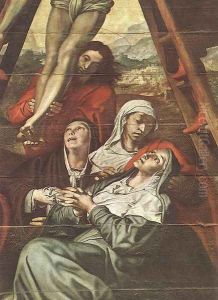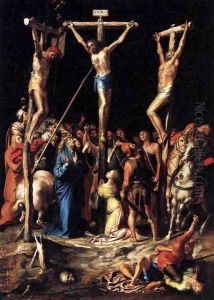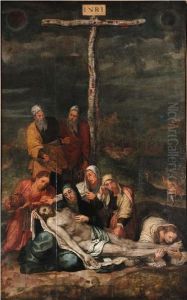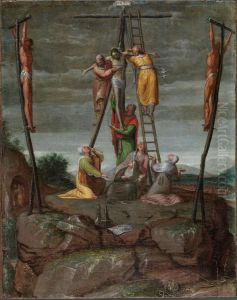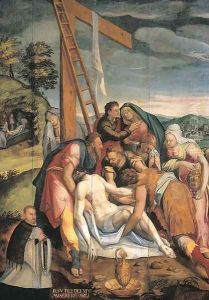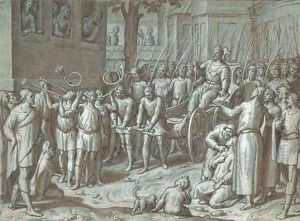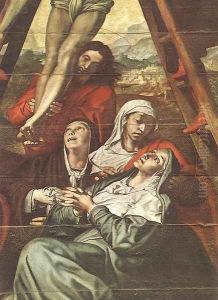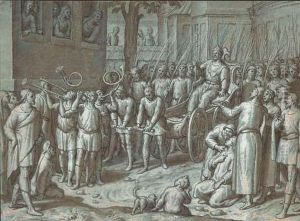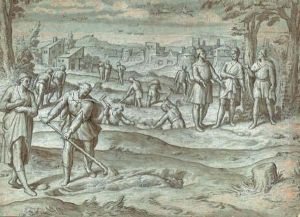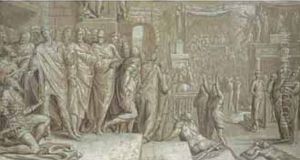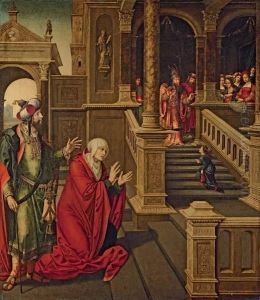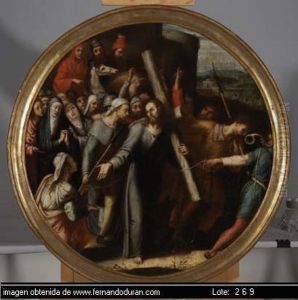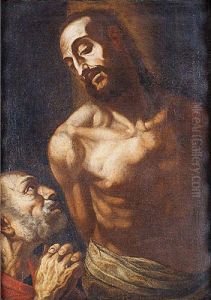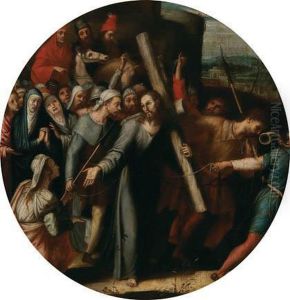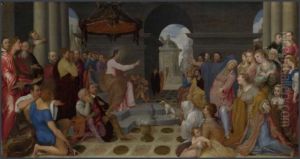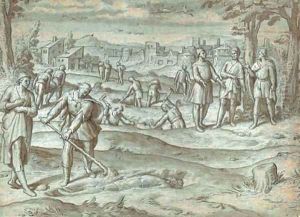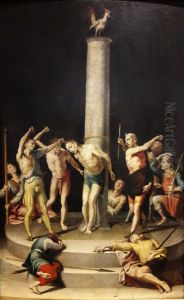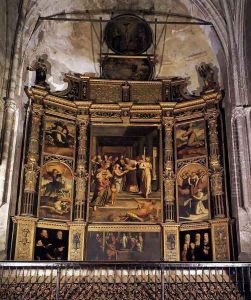Pedro de Campana Paintings
Pedro de Campana, born Pieter de Kempeneer in Brussels, was a significant figure in the 16th-century art scene, whose work bridged the Northern Renaissance and the Spanish Renaissance. His move from the Low Countries to Spain marked a pivotal transition in his career, allowing his Northern European artistic roots to intermingle with Spanish influences, resulting in a unique blend that characterized his works.
De Campana is most famous for his religious artworks, which exhibit a deep understanding of human emotion and a meticulous attention to detail, traits likely influenced by his Northern upbringing. His most celebrated piece, 'The Descent from the Cross', created for the Cathedral of Seville, is a prime example, showcasing his ability to convey complex religious narratives with profound emotional depth. This masterpiece is often cited as a pivotal work that showcases the blend of Flemish realism and Spanish mysticism.
In addition to his religious paintings, De Campana demonstrated versatility across various art forms, including printmaking and drawing. His works in these mediums further exhibit his keen observational skills and his ability to capture the essence of his subjects with remarkable clarity and sensitivity.
Throughout his career in Spain, De Campana's style evolved, reflecting the dynamic changes in European art during the Renaissance. His early works are noted for their detailed realism, a hallmark of Flemish art, while his later pieces increasingly incorporated the warmer tones and dramatic light contrasts found in Spanish painting. This evolution underscores his adaptability and his role as a conduit through which ideas and techniques were exchanged between the Flemish and Spanish art worlds.
Despite his contributions to the art of the Renaissance, Pedro de Campana's name is not as widely recognized as some of his contemporaries. However, his works continue to be studied for their artistic merit and historical significance, offering insights into the cross-cultural exchanges that enriched Renaissance art. His legacy is preserved in the collections of major museums and in the annals of art history, where he is celebrated as a master who bridged two worlds.
